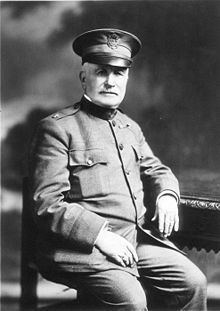Name William Keen Role Surgeon | Children Dora Keen | |
 | ||
Parent(s) William W. Keen (1797-1882) and Susan Budd Books Gunshot Wounds and Other, Keen of Philadelphia: The Colle, Selected Papers and Addresses, The Surgical Operation, The Memoirs of William W | ||
William williams keen
William Williams Keen, Jr. (January 19, 1837 – June 7, 1932) was an American doctor who was the first brain surgeon in the United States. He also saw Franklin D. Roosevelt when his paralytic illness struck, and worked closely with six American presidents.
Contents
Biography
Keen was born in Philadelphia, Pennsylvania on January 19, 1837, the son of William Williams Keen, Sr. (1797–1882) and Susan Budd. He attended Philadelphia Central High School. He studied at Brown University, where he graduated in 1859. He graduated in medicine from Jefferson Medical College in 1862. During the American Civil War, he worked for the U.S. Army as a surgeon. After the war, he spent two years studying in Paris and Berlin.
Keen started lecturing surgical pathology in Philadelphia. He was president of the Philadelphia School of Anatomy from 1875 to 1889. He became known in the medical community around the world for inventing several new procedures in brain surgery, including drainage of the cerebral ventricles and removals of large brain tumors. Keen also performed one of the first successful removals of a brain tumor. Keen also participated in a secret surgical operation to remove a cancerous jaw tumor on Grover Cleveland in 1893.
Keen married in 1867 to Emma Corinna Borden. They had four children: Corinne, Florence, Dora, and Margaret. He died in Philadelphia on June 7, 1932, at the age of 95. Keen's grandson, Walter Jackson Freeman II, became a doctor who specialized in lobotomies.
Honors and recognition
He received honorary degrees from Jefferson Medical College and Brown, Northwestern, Toronto, Edinburgh, Yale, St. Andrews, Greifswald, and Upsala universities, and served as president of the American Surgical Association (1898), the American Medical Association (1900), the Congress of American Physicians and Surgeons (1903), and the American Philosophical Society (after 1907).
In 1914, at a meeting of the International Surgical Association, he was elected president for the meeting of 1917. After 1894, he was foreign corresponding member of the Société de Chirurgie de Paris, the Société Belge de Chirurgie, and the Clinical Society of London; honorary fellow of the Royal College of Surgeons of England, the Royal College of Surgeons of Edinburgh, the German Society of Surgery, the Palermo Surgical Society, and the Berliner Medizinische Gesellschaft and associate fellow of the American Academy of Arts and Sciences.
Procedures and signs
Works
He published:
Co-authored:
